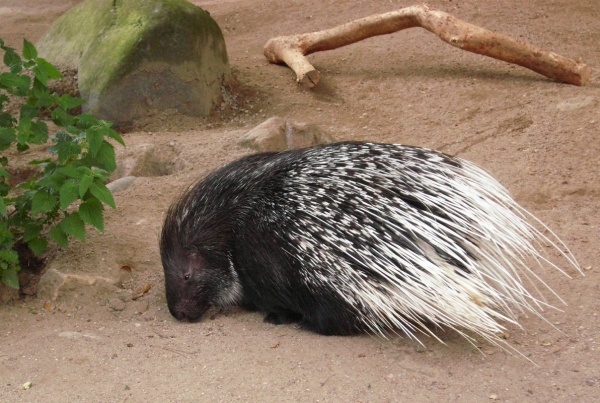Facts About Crested porcupine
The crested porcupine, also known as the African crested porcupine, is a remarkable rodent species found in Italy, North Africa, and sub-Saharan Africa. This porcupine is easily recognized by its bristly coat and distinctive quills, which it can erect into a crest for defense. Although primarily herbivorous, feeding on roots, bulbs, and leaves, it occasionally consumes insects, small vertebrates, and carrion. Its specialized teeth are adapted for grinding plant material, complemented by a specialized digestive system.
In terms of reproduction, crested porcupines typically produce one litter per year, with one or two well-developed offspring born after a 66-day gestation period. These young venture out of the den at around one week old and reach adult size within one to two years. Crested porcupines are nocturnal and monogamous, raising their young in small family groups. When threatened, they exhibit impressive defensive behaviors, such as raising and fanning their quills and even charging at potential threats.
Despite being hunted for food in many regions, the crested porcupine is currently listed as "Least Concern" on the conservation status scale. They are widespread, inhabiting countries such as Algeria, Ghana, Libya, and Tunisia, as well as Italy. They have adapted to various environments and altitudes, and some evidence suggests they were present in Europe during the Upper Pleistocene.

 Ethiopia
Ethiopia